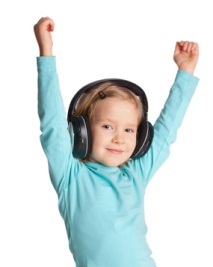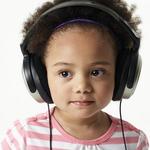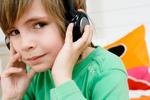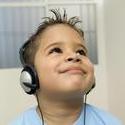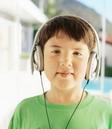Auditory Integration Training for Autistic Children:
A Clinical Study
Read more
clinical research on AIT
Contact Us
Complete
On-line AIT Checklist
Research by Alaa El-Din Abou-Setta, MD, Lecturer of
Audiolgy, Faculty of Medicine, Suez Canal University; Iman Sadek, MD,
Professor of Audiolgy,Faculty of Medicine, Ain Shams University; Amani
Shalaby, MD, Professor of Audiolgy, Faculty of Medicine, Ain Shams
University, Nagwa Hazzaa, MD, Professor of Audiolgy,Faculty of
Medicine, Ain Shams University
This article was originally published in a medical magazine
named "The International Journal of Child Neuropsychiatry" Vol. 3(1): pages 39-
47, March 2006
"In
conclusion, AIT can be viewed as a reasonably effective complementary tool in
the rehabilitation of autistic children. It seems that it paves the road for
more benefit from the classical ways of rehabilitation."
|
Introduction:
Auditory Integration Training is essentially a form of music therapy
developed by Dr Guy Berard in Annecy, France in
1963. His technique gained world-wide recognition with the publication of the
book titled "The Sound of a
Miracle" in 1986 about Georgia, diagnosed with severe autism who greatly
benefited from a course of 20 AIT sessions. AIT was successfully used to help
patients with attention deficit hyperactive disorders (ADHD), learning
disabilities, pervasive developmental disorders, central processing disorders,
sound sensitivity, vestibular processing dysfunction and speech comprehension
problems 1.
AIT, as developed by Berard and
based on the work of his predecessor Alfred Tomatis, consists of two sessions
per day, 30 minutes each, for ten days 2. Therapeutic listening implies that the
listening programs are individualized to each patient. Different studies were
conducted to investigate the efficacy of AIT. While the majority supported its
beneficial effect 3-9, few studies either reported no benefit or controversial
findings after AIT 10-12.
The aim of this work was to
explore the value of AIT as a complementary measure in rehabilitation of
autistic children.
Methodology:
Sixteen children, previously diagnosed as having
classic autism, or some autistic traits, by a
child psychiatrist, underwent
AIT, during the period
from July-September 2005, as part of their rehabilitative program. They were
submitted to audiological evaluation, which was performed to ensure that all
children have normal peripheral hearing, normal middle ears function and to
detect hypersensitivity to sounds if present.
Immittancemetry using acoustic
immittancemeter, Madsen model Zodiac 901, was done prior to hearing threshold
assessment. Children with middle ear effusion or Eustachian dysfunction were
given medical treatment and retested after resolution of middle ear
disturbances. Based on the behavior of the child; either free-field or play
audiometry was applied using two-channel audiometer Madsen model Orbiter 922.
Hearing thresholds were
determined using traditional methods or audioscan at all frequencies from 125 Hz
up to 8 KHz, including half-octaves. Peaks and/or plateaus in
audiogram were
identified, denoting auditory hypersensitivity. Uncomfortable loudness
thresholds were also determined for each child using pure tones, narrow band
noise, live speech sounds and speech noise.
The previous evaluation was
routinely performed by two examiners at a time, and then repeated at least twice
to ensure consistency of the results. In addition, auditory brainstem response
was recorded, whenever hearing loss was suspected, for confirmation of results
using Evoked potential system Biologic Navigator EP317.
An
important step prior to application of AIT was to train the child to wear the
headphones. This training was held partly in the clinic and partly at home
by the help of the parents and/or the shadow teacher.
AIT listening sessions was
conducted using the Kirby Auditory Modulation System "KAMS". Based on the
audiological evaluation, notch-filtering applications were made for AIT
candidates consistent with Kirby's protocol. Every patient was submitted to 20
listening sessions of 30 minutes each, at least three hours apart. Re-evaluation
was done after the first ten sessions to readjust filters; (if necessary).
Starting from the 6th day of listening, lateral emphasis was applied to
stimulate left auditory cortex. A final evaluation was done after completion of
the 20 listening sessions.
Before admission to AIT program,
parents were allowed to fill pre-admission questionnaire in order to explore
their main concerns and to ensure realistic expectations.
Autism Performance Observation
Sheet (APOS) was developed to allow parents to report on changes in behavior
and communication abilities of their children. Parents were allowed to fill APOS
three months after the last AIT session.
Results:
Out of the sixteen children who received AIT, the outcome could be evaluated in
15 of them. One child traveled abroad immediately after the sessions and his
data were not available. The age of the children ranged from 3 years 7 months
up to 12 years 2 months. The mean age was 5 years 5 months. They were
distributed as follows: eight children were less than 5 years of age, while
three were from 5 up to 9 years and five children lied between 9 and 12 years.
Audiological evaluation for all
children proved absence of any peripheral hearing loss.
Auditory hypersensitivity was encountered
in 8 children. Hypersensitive peaks in the audiogram could be identified in
6 children at either 2, 3, 4 or 6 KHz. One child had multiple bilateral
symmetrical peaks. Another one showed single bilateral symmetrical peaks. The
other four had asymmetrical peaks, whether unilateral or bilateral, single or
multiple (table 1). Two children showed reduced loudness discomfort level. The
final evaluation revealed disappearance of all previously detected peaks. This
was true except for one child (aged 12 years and 2 months). His peaks at 2 & 3
KHz did disappear from the audiogram. Yet, there was evident emergence of new
peak at 750 Hz in right ear only.
Table (1): Hypersensitive peaks
detected in audiogram of six autistic children
|
Case no. |
Age-years |
Right ear |
Left ear |
|
1 |
11 |
2 & 4 KHz |
2 & 4 KHz |
|
2 |
7 |
None |
2 & 3 KHz |
|
3 |
3 |
3 KHz |
None |
|
4* |
12 |
2 & 3 KHz |
None |
|
5 |
12 |
4 & 6 KHz |
6 KHz |
|
6 |
5 |
4 KHz |
4 KHz |
|
* new peaks |
12 |
750 Hz |
None |
The results of APOS showed
different degrees of improvement, reported by the parents, in many of the
behavioral and communicative abilities of the children (table 2).
Self-esteem, expressing feelings,
and self-help skills were the most common behavioral aspects improved. In
addition, response to orders, eye
contact, attention and verbal language were the most common communicative
abilities reported to improve (table 3).
Table (2): (APOS) Behavioral
changes 3 months post AIT as reported by the parents.
|
Behavior |
Better % |
Same % |
Worse % |
N/A % |
|
Self esteem |
66.7 |
33.3 |
----- |
----- |
|
Aggressiveness |
13.3 |
20 |
13.3 |
63.2 |
|
Defending him/her self |
26.6 |
20 |
----- |
53.3 |
|
Expressing feelings |
46.6 |
40 |
----- |
13.3 |
|
Appropriate emotions |
13.3 |
73.3 |
----- |
13.3 |
|
Anger spills / hyperactivity |
26.6 |
6.6 |
13.3 |
53.3 |
|
Self help skills |
46.6 |
33.3 |
----- |
20 |
N/A: Not applicable .i.e. there
was no compliant in such aspect before AIT.
Table (3): (APOS) Communication
abilities changes 3 months post AIT as reported by the parents.
|
Communication |
|
Same
% |
Worse
% |
N/A
% |
| Eye
contact - attention |
80 |
13.3 |
----- |
6.6 |
| Response
to his/her name |
26.7 |
60 |
----- |
13.3 |
|
Response to orders:
- auditory/ non-auditory |
86.7 |
13.3 |
----- |
----- |
| Express
him/herself needs |
73.3 |
26.7 |
----- |
----- |
| Playing
with family members |
66.7 |
26.7 |
----- |
6.6 |
| Playing
with other children |
60 |
40 |
----- |
----- |
|
Receptive verbal language |
80 |
20 |
----- |
----- |
|
Sensory hypersensitivity:
- auditory / touch / appetite |
66.7 |
20 |
----- |
13.3 |
| Sleep
rhythm |
26.7 |
33.3 |
----- |
40 |
| Toilet
training |
20 |
26.7 |
----- |
53.3 |
N/A: Not applicable .i.e. there was no compliant in such aspect
before AIT.
Figure 1 - Percent of children showing improvement in
different aspects following AIT
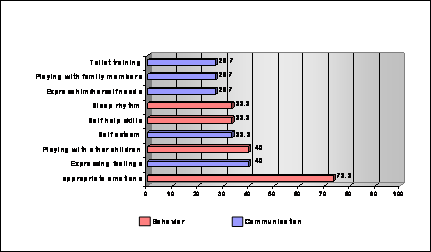
Figure 2 - Percent of children showing no change in different
aspects following AIT

Discussion:
The ultimate goal of the present work was to record the changes –whether in
behavior or in communicative abilities– in a group of 16 autistic children,
three months following AIT sessions.
There was a general improvement
in different aspects studied as shown in tables (2,3) and figure (1).
Similar improvement was reported by Veale 4 who mentioned behavioral changes
including: reductions in hyperactivity, social withdrawal, auditory problems,
restlessness and anxiety in a group of 46 autistic patients following AIT
sessions. Monville and Nelson 6 demonstrated than 63% of parents of children
with autism or pervasive developmental disorders reported an increase in
attention span and a decrease in sound sensitivity while 30% reported an
increase in language.
The improvement noticed in
attention following AIT could be related to the modulation of music during AIT
listening sessions. Changing the music from low end of frequency at one moment
to high level of the spectrum in another moment together with random change in
volume may train the listener to tune in to his/her environment. Indeed, random
changes cannot be predicted and the patient learn to shift his/her attention
more rapidly and more efficiently 7.
Although AIT stimulates
essentially the auditory system, the improvement was also found in other senses
(smell, taste and touch). This could be explained on the basis that intense
sounds stimulates not only stimulate not only the cochlea, but also the
vestibular otolith organs which are connected to the brainstem structures,
spinal cord and cerebellum 13 . The cerebellar-vestibular system is the
sensory-motor processing center of the brain. It is responsible for the
integration and processing of all sensory information (including hearing,
vision, taste or smell) Goddard 14-16 .
In the present work, eight
children reported hypersensitivity to sounds in the form of peaks ( n = 6, table
1 ) or intolerance to loud sounds ( n = 2). This hypersensitivity disappeared
completely in six of them while one child had consistent peaks and in the
other one, a new peak appeared after disappearance of original ones. Such
improvement was also reported by Woodward 5 and Monville and Nelson 6. Research
data correlated hypersensitivity to sounds with disturbance in serotonin
neurotransmitter in the brain of autistic children. Hergerl and Pechel 17-19 had
demonstrated the strong relation between loudness dependence of auditory evoked
potentials and low serotonergic function in normal human volunteers and
psychiatric patients. Another possible explanation for the disappearance of
hypersensitivity to certain frequencies after AIT could be due to lateral
inhibition phenomenon proposed by Edelson 7. Filtering out hypersensitive
frequencies and stimulation of non-sensitive adjacent areas would possibly, by
lateral inhibition, abolish sensitivity to sounds. The appearance of new peaks
after disappearance of original ones was an unexpected findings in one of our
patients, we can speculate that the original peaks were so sharp and prominent
to the extent that, relatively, the newly detected peak was considered of normal
sensitivity in the evaluation prior to AIT.
Hypersensitivity to certain sounds
was claimed to be responsible for painful or distorted hearing which in turn
lead to delayed language development, both receptive and expressive. In
addition, this hypersensitivity could be also responsible for the fear
reactions, anger spills, unexplained changes in mood or disturbed sleep rhythm
frequently encountered in autistic children. The extensive neural
connections between the auditory cortex in the temporal lobe, the limbic system
and amygdale support the relation between hypersensitivity to sounds and the
fore mentioned abnormal behavior. Accordingly, improvement in such cases could
be viewed, partly, as a consequence of disappearance of such hypersensitivity.
The positive changes noticed in
our patients in variable aspects and degrees suggest that after the completion
of the listening sessions, the brain reorganized itself in a more natural,
structured and functional manner. Indeed, Kirby 20 proposed the 1/f theory
suggested by Anderson 21 to explain the changes that occur after AIT.
One over f (1/f) noise waveform
patterns represents a distribution pattern found throughout our natural world
and may correlate to "normal" brain function. Developmental disorders and autism
appear to be associated with chronic alterations in these normally stable
bursting (1/f) patterns and the brain regions supporting this activity. European
classical music composition contains 1/f distribution of dynamic (as well as
pitch) content. It is believed that this pattern may be partly responsible for
some of the beneficial effects of Kirby method of AIT applied in this
work.
Regardless which of the theories
will prove its relation to the improvement following AIT, we can not ignore a
very strong fact which is "brain plasticity". It reflects the ability of the
brain to be molded or changed after repeated sensory stimuli. The brain will
respond with change when three conditions are met: attention, repetition and
intense exposure. These three rules are fulfilled in AIT 22.
An attempt was made to identify
the predictors of success of AIT. However, in view of the presence of multiple
variables (e.g. age, previous enrollment in rehabilitative programs, severity of
autism, family support, enrollment of children in rehabilitation program
following AIT, presence/ absence of hypersensitivity, etc.) and the relatively
small number of children examined, statistical analysis could not be performed
to achieve this goal. Yet, thorough observation of our sample highlighted the
importance of family support and enrollment of children in a comprehensive
rehabilitative program post AIT. It should be mentioned that
Rimland and Edelson 23 reported that no
significant relationships were found between behavioral improvement and age,
degree of sound sensitivity and the amount of variability in the pre AIT
audiogram.
In conclusion,
AIT can be viewed as a reasonably effective complementary tool in the
rehabilitation of autistic children. It seems that it paves the road for more
benefit from the classical ways of rehabilitation.
References:
1 – Barkley R A: Attention deficit and hyperactivity disorders: A handbook
for diagnosis and treatment. New York: Guilford press: 2000; 80-95
2 - Berard G: Concerning length,
frequency number and follow-up AIT sessions. The society for auditory
intervention techniques the sound connection newsletter: 1995; 2:5-6
3 - Cortez-Mckee D, Panksepp J:
Study of the effects of AIT in Autism. Paper presented at the Annual NW Ohio
Autism Society conference: 1993.
4 - Veale T: Two studies of the
effects of Auditory Integration Training in Autism. Paper presented at the
international ASA conference on Autism, Toronto, Canada: 1993.
5 - Woodward D: Changes in
unilateral and bilateral sound sensitivity as a result of AIT. The sound
connection: 1994; 2: 4.
6 - Monville D, Nelson N: Parental
perceptions of change following AIT for autism: Paper presented at the American
Speech-Language-Hearing conference, New Orleans: 1994.
7 - Edelson S, Arin D, Bauman M,
Lukas S, Jane R, Sholar M, Rimland B: Auditory Integration Training: A double-
blind study of behavioral, electrophysiological, and audiometric effects in
autistic subjects. Focus on Autism and other Developmental Disabilities: 1999;
14:73-81.
8 - Kirby W: The effects of
Auditory Integration Training on children diagnosed with Attention Deficit /
Hyperactivity Disorder: A pilot study. The Sound Connection: 2000; 7:4-5.
9 - Huskey B, Barnett K, Cimorelli
J: The effects of Auditory Integration Therapy on Central Auditory Processing.
Paper presented at the American Speech - Language - Hearing Conference, New
Orleans: 1994.
10 - Panksepp J, Ross J, Narayanan
T: Biochemical changes as a result of AIT-type Modulated and un-modulated Music.
Lost and Found: perspectives on Brain, Emotion, and Culture: 1996; 7, 2: 1-4.
11 - Mudford O, Cross B, Breen S,
Cullen C, Revees D, Gould J, Douglas J: Auditory Integration Training for
children with Autism: No behavioral effects detected. American Journal of Mental
Retardation: 2000; 105: 118-129.
12 - Zollweg W, Vance V, Palm D:
The efficacy of Auditory Integration Training: A double blind study. American
Journal of Audiology: 1997; 6:39-47.
13 - Halmagi G, Curthoys I:
Clinical testing of otolith function. Ann NY Acad. Sci: 1999; 195-204
14 - Goddard S: A developmental
basis for learning difficulties and language disorders. Institute for
Neuro-physiological Psychology Monograph series: 1990; 1.
15 - Levinson H: Smart but dumb.
New York: Warner Books: 1984.
16 - Levinson H: Phobia free. New
York: M Evans & Co., Inc: 1986.
17 - Hergel U, Juckel G: Auditory
Evoked Dipole source activity mediator of central serotonergic dysfunction in
psychiatric patients. Pharmaco-psychiatry: 1994 March, 27; 2:75-8.
18 - Hergel U, Juckel G:
Identifying Psychiatric patients with serotonergic dysfunction by event related
potentials. World J. Biol. Psychiatry: 2000 Apr, 1; 2: 112-8.
19 - Hergel U, Juckel G: Event
related potentials. Do they reflect central serotonergic neurotransmission and
do they predict clinical response to serotonin agonists? J. Affect Disord: 2001
Jan; 62(1-2): 93-100.
20 – Kirby W: Personal
communication: 2005.
21 – Anderson C M: From molecule
to mind fullness. How vertically convergent fractal time fluctuations unify
cognition and emotion. Consciousness and emotions: 2000; 193-226.
22 - Bellis T: Neuromaturationand
Neuroplasticity of the Auditory the Auditory system. In Central auditory
processing disorders in educational settings: 1997; Ch.3, p.65.
23 - Rimland B, Edelsen S: Second
opinion : The effects of auditory training on autism. American Journal of
Speech-Language Pathology: 1994; 3:16-24.
| 
